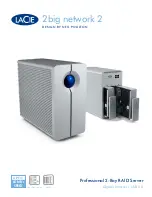
Chapter 3. Configuring the server
17
ServerGuide™ CDs,” on page 45 for additional information on the System
Partition.
—
Boot Device Location
Select this choice to determine whether the server boots from the system
board SCSI device or from an adapter in an expansion slot.
—
PCI Slot/Device Information
Select this choice to view system resources used by installed PCI/PCI-X
devices. PCI/PCI-X devices are usually configured automatically. This
information is saved when you exit. The
Save Settings
,
Restore Settings
,
and
Load Default Settings
choices on the Configuration/Setup Utility main
menu do not save the PCI Slot/Device Information settings.
Attention:
You must use the menu selections to save custom settings for the
PCI Slot/Device Information
choice. The
Save Settings
,
Restore
Settings
, and
Load Default Settings
choices on the Configuration/Setup
Utility main menu do not save the PCI Slot/Device Information settings.
After making changes, select:
–
Save and exit the PCI utility
to save the changes and return to the
Advanced Setup
screen.
–
Exit the PCI utility without saving changes
to ignore the changes,
restore the previous settings, and return to the
Advanced Setup
screen.
—
Cache Control
Select this choice to enable or disable the microprocessor cache. In addition,
you can set the microprocessor cache mode as write-back (WB) or write-
through (WT). Selecting write-back mode provides better system
performance.
—
Memory Settings
Select this choice to manually disable or enable a bank of memory.
If a memory error is detected during POST or memory configuration, the
server can automatically disable the failing memory bank and continue
operating with reduced memory capacity. If this occurs, you must manually
enable the memory bank after the problem is corrected. Select
Memory
Settings
from the Advanced Setup menu, and use the arrow keys to highlight
the bank that you want to enable; then, use the arrow keys to select
Enable
.
—
Integrated System Management Processor Settings
Select this choice to specify the
Reboot System on NMI
option. You can use
this option to enable or disable automatic reboot after a Non Maskable
Interrupt (NMI) occurs.
•
Error Logs
Select this choice to view or clear error logs.
— Select
POST Error Log
to view the three most recent error codes and
messages that the system generated during POST.
Select
Clear Event/Error Logs
from the POST Error Log menu to clear the
error log.
— Select
System Event/Error Log
to view the System Event/Error log. The
System Event/Error log contains all the system error and warning messages
that the system has generated. You can use the arrow keys to move between
pages in the System Event/Error log.
Select
Clear Event/Error Logs
from the System Event/Error Log menu to
clear the error or event log.
•
Save Settings
Summary of Contents for Eserver xSeries 360 Type 8686
Page 1: ...User s Reference xSeries 360 Type 8686...
Page 2: ......
Page 3: ...IBM IBM xSeries 360 User s Reference...
Page 8: ...vi IBM xSeries 360 User s Reference...
Page 14: ...xii IBM xSeries 360 User s Reference...
Page 64: ...50 IBM xSeries 360 User s Reference...
Page 108: ...94 IBM xSeries 360 User s Reference...
Page 162: ...148 IBM xSeries 360 User s Reference...
Page 183: ......
Page 184: ...IBM Part Number 24P2866 Printed in the United States of America 24P2866...
















































